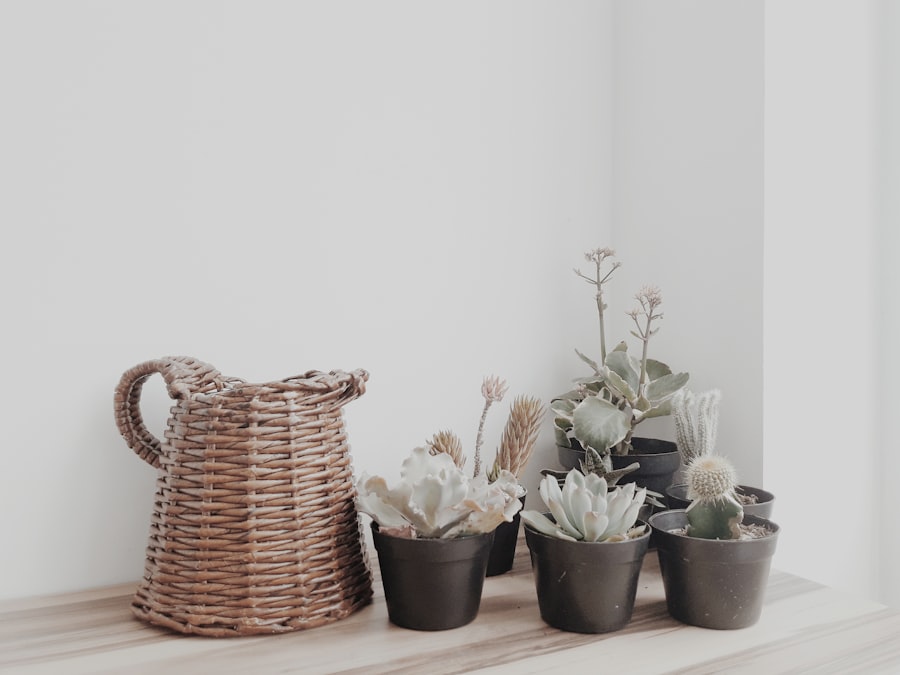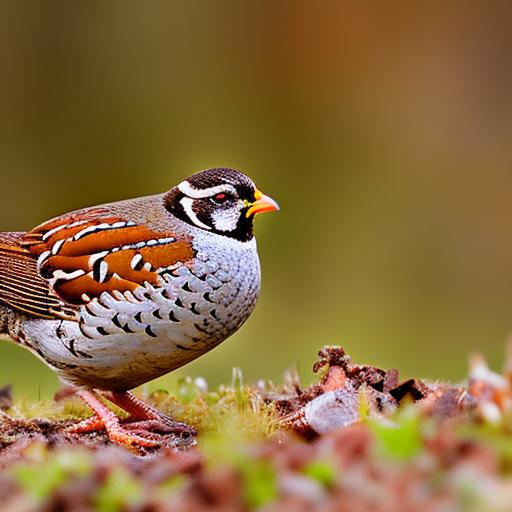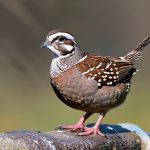Keeping quail indoors can offer a range of benefits for both the quail and their owners. One of the main advantages is the ability to closely monitor the health and well-being of the quail. By keeping them indoors, owners can easily observe their behavior, monitor their food and water intake, and quickly identify any signs of illness or distress. This can lead to early intervention and treatment, ultimately improving the overall health and longevity of the quail.
Additionally, keeping quail indoors can provide a more controlled environment for breeding and egg production. With the right setup, owners can create an ideal environment for quail to lay eggs consistently, leading to a more reliable supply of fresh eggs. This can be particularly beneficial for those who are interested in sustainable living or self-sufficiency, as they can have a readily available source of protein-rich eggs right in their own home.
Furthermore, keeping quail indoors can also minimize the risk of predation and exposure to harsh weather conditions. By providing a secure and climate-controlled environment, owners can protect their quail from potential predators such as foxes, raccoons, or birds of prey. This can offer peace of mind for owners who may live in areas with high predator populations or unpredictable weather patterns.
Key Takeaways
- Keeping quail indoors can provide a convenient and controlled environment for raising quail.
- Setting up an indoor quail habitat requires minimal space and can be easily customized to fit your living space.
- Feeding and caring for quail indoors involves providing a balanced diet and maintaining a clean living environment.
- Potential challenges of keeping quail indoors include managing noise and odor, as well as providing adequate space for the birds.
- Legal considerations for keeping quail indoors may vary by location, so it’s important to research local regulations before getting started.
Setting Up an Indoor Quail Habitat
Setting up an indoor quail habitat requires careful planning and consideration of the quail’s needs. The first step is to select an appropriate enclosure that provides enough space for the quail to move around comfortably. This can be a large cage or a dedicated room with proper flooring and ventilation. The enclosure should also have a secure door or lid to prevent the quail from escaping and to keep out any potential predators.
Next, it’s important to provide suitable bedding material for the quail. This can include straw, wood shavings, or specialized bedding designed for poultry. The bedding should be regularly cleaned and replaced to maintain a clean and hygienic environment for the quail.
In addition to the enclosure and bedding, it’s essential to set up a suitable feeding and watering system for the quail. This can include hanging feeders and waterers to prevent contamination and spillage. It’s important to provide a balanced diet for the quail, including commercial quail feed, fresh greens, and occasional treats such as mealworms or fruits.
Furthermore, it’s crucial to provide adequate lighting and heating in the indoor quail habitat. Quail require a consistent light cycle to maintain their reproductive and behavioral patterns, so it’s important to provide a source of natural or artificial light. Additionally, maintaining a suitable temperature is essential for the health and well-being of the quail, especially during colder months.
Feeding and Caring for Quail Indoors
Feeding and caring for quail indoors requires attention to their dietary needs and overall well-being. Quail should be provided with a balanced diet that includes commercial quail feed as the main source of nutrition. This feed is specially formulated to meet the nutritional requirements of quail and should be offered in appropriate quantities based on the age and activity level of the birds.
In addition to commercial feed, quail should also have access to fresh greens and vegetables to supplement their diet. This can include leafy greens, broccoli, carrots, and other nutritious options. It’s important to introduce new foods gradually and monitor the quail for any signs of digestive upset or aversion to certain foods.
Furthermore, providing clean water is essential for the health of indoor quail. Water should be offered in clean and accessible containers that are regularly refilled and checked for contamination. It’s important to monitor water intake to ensure that the quail are adequately hydrated, especially during hot weather or periods of high egg production.
Caring for indoor quail also involves regular cleaning and maintenance of their habitat. This includes removing soiled bedding, cleaning feeding and watering equipment, and maintaining a clean and hygienic environment for the quail. Regular health checks should also be conducted to monitor the overall condition of the birds and identify any signs of illness or injury.
Potential Challenges of Keeping Quail Indoors
While there are many benefits to keeping quail indoors, there are also potential challenges that owners may encounter. One common challenge is managing the odor associated with indoor quail habitats. Quail droppings can produce a strong ammonia odor, especially in poorly ventilated areas. Owners may need to implement strategies such as regular cleaning, proper ventilation, and the use of odor-neutralizing products to minimize odors.
Another challenge is maintaining a suitable environment for egg production. Quail require specific lighting conditions to stimulate egg laying, so owners may need to provide supplemental lighting during shorter daylight hours. Additionally, managing the temperature and humidity levels in the indoor habitat is crucial for ensuring optimal egg production and overall health of the quail.
Furthermore, indoor quail habitats require careful management to prevent the spread of diseases and parasites. Close confinement can increase the risk of disease transmission among quail, so owners should implement strict biosecurity measures and monitor the health of their birds closely. Additionally, regular cleaning and disinfection of the habitat can help reduce the risk of disease outbreaks.
Legal Considerations for Keeping Quail Indoors
Before setting up an indoor quail habitat, it’s important for owners to be aware of any legal considerations related to keeping quail. Local regulations may vary regarding the keeping of poultry indoors, including zoning restrictions, noise ordinances, and health regulations. Owners should research and understand any applicable laws or regulations that may impact their ability to keep quail indoors.
In some areas, permits or licenses may be required for keeping quail or other poultry species indoors. Owners should contact their local animal control or agricultural authorities to inquire about any necessary permits or approvals. Failure to comply with legal requirements could result in fines or other penalties, so it’s essential for owners to ensure that they are in compliance with relevant regulations.
Additionally, owners should consider any homeowner association rules or rental agreements that may restrict the keeping of quail indoors. Some residential communities may have specific guidelines regarding the keeping of livestock or poultry, so it’s important to review any applicable rules before establishing an indoor quail habitat.
Tips for Keeping Quail Happy and Healthy Indoors

To ensure that indoor quail remain happy and healthy, there are several tips that owners can follow. Providing ample space within the indoor habitat is essential for allowing the quail to move around freely and engage in natural behaviors such as dust bathing and foraging. Owners should aim to provide at least 1 square foot of space per quail to prevent overcrowding.
Enriching the indoor habitat with perches, hiding spots, and toys can also help keep quail stimulated and engaged. This can include branches for perching, tunnels for exploration, and hanging toys for pecking and play. Enrichment activities can help prevent boredom and reduce stress in indoor quail.
Additionally, maintaining a consistent routine for feeding, cleaning, and handling can help reduce stress and promote a sense of security for indoor quail. Quail thrive on predictability and routine, so establishing a regular schedule for care and interaction can help them feel more comfortable in their indoor environment.
Finally, providing opportunities for socialization and interaction with other quail can contribute to the overall well-being of indoor birds. Quail are social animals that thrive in small flocks, so owners may consider keeping multiple birds together to promote natural behaviors and social dynamics.
Is Keeping Quail Indoors Right for You?
In conclusion, keeping quail indoors offers a range of benefits including improved monitoring of health, reliable egg production, and protection from predators and harsh weather conditions. However, there are also potential challenges such as odor management, disease prevention, and legal considerations that owners should be aware of before establishing an indoor quail habitat.
Setting up an indoor quail habitat requires careful planning and attention to detail, including providing suitable housing, bedding, feeding, lighting, heating, and ventilation. Feeding and caring for indoor quail involves offering a balanced diet, clean water, regular cleaning, and monitoring of their overall health.
Before keeping quail indoors, owners should research any legal considerations related to zoning regulations, permits, homeowner association rules, or rental agreements that may impact their ability to keep quail indoors.
To keep indoor quail happy and healthy, owners should provide ample space, enrichment activities, a consistent routine, and opportunities for socialization with other birds.
Ultimately, whether keeping quail indoors is right for you will depend on your ability to meet their needs while managing potential challenges. With careful planning and dedication to providing a suitable environment for indoor quail, owners can enjoy the benefits of keeping these fascinating birds in their home.
If you’re considering keeping quail indoors, you may also be interested in learning about the ideal door size for a chicken coop. Understanding the importance of the right door size can help ensure the safety and comfort of your poultry. Check out this informative article on chicken coop door size to make sure your coop is equipped with the right features for your feathered friends.
FAQs
What are the benefits of keeping quail indoors?
Quail can be kept indoors for various reasons, including convenience, space limitations, and protection from predators. Indoor quail keeping also allows for easier monitoring and maintenance of their environment.
What are the considerations for keeping quail indoors?
When keeping quail indoors, it’s important to provide them with adequate space, proper ventilation, and a suitable substrate for scratching and dust bathing. Additionally, a balanced diet and access to natural light are essential for their health and well-being.
What type of housing is suitable for indoor quail keeping?
Indoor quail housing should provide enough space for the birds to move around comfortably, as well as separate areas for nesting, feeding, and dust bathing. The housing should also be easy to clean and maintain to ensure the quail’s health.
What are the legal considerations for keeping quail indoors?
Before keeping quail indoors, it’s important to check local regulations and zoning laws to ensure that keeping quail is allowed in your area. Some areas may have restrictions on keeping poultry indoors, so it’s important to be aware of any legal considerations.
What are the potential challenges of keeping quail indoors?
Keeping quail indoors may present challenges such as managing noise levels, controlling odors, and preventing the spread of dust and feathers. Additionally, providing a suitable environment that mimics their natural habitat can be a challenge when keeping quail indoors.
Meet Walter, the feathered-friend fanatic of Florida! Nestled in the sunshine state, Walter struts through life with his feathered companions, clucking his way to happiness. With a coop that’s fancier than a five-star hotel, he’s the Don Juan of the chicken world. When he’s not teaching his hens to do the cha-cha, you’ll find him in a heated debate with his prized rooster, Sir Clucks-a-Lot. Walter’s poultry passion is no yolk; he’s the sunny-side-up guy you never knew you needed in your flock of friends!







